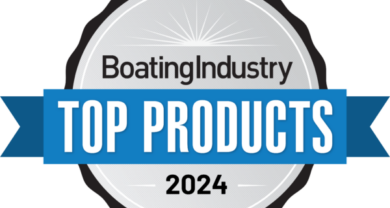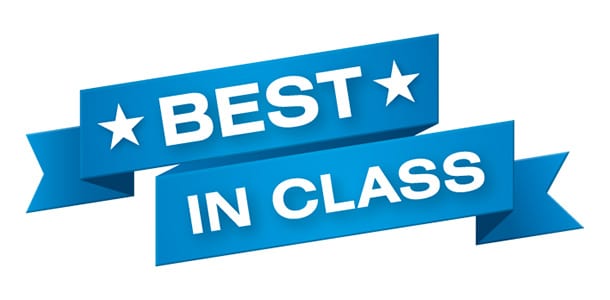Why you need a business plan, by Spader Business Mangement
The Spader Approach to Strategic “Planning”
Our approach focuses on strategic success that is shaped by both anticipating the changing market environment and business landscape and responding effectively to it. This approach to strategy is based on the principle that it makes much more sense to adapt to the world around us than seek to change the world to fit our personal or business preferences.
Compared to earlier decades when strategic planning was the rage, we have observed that strategic planning has fallen into disfavor for a couple of reasons: 1) “plans” are too static in today’s ever-changing environment, when adjustments must frequently be made, and 2) such “planning” is too often only a periodic intellectual exercise that resides in a binder on a shelf or filed on a computer, rather than being a dynamic “action plan” to maximize success.
In too many cases, business owners and leaders become inflexible and rigid in their approach by adopting strategic plans as a substitute for continuous strategic success, which consists of strategic thinking, decision-making, and actions.
When done properly, the strategic success process consists of dynamic action plans that include contingencies for both favorable or unfavorable conditions, plans about leveraging conditions to your best advantage, and being aware of how to manage your organization’s strengths as well as its limitations to adjust on the fly to succeed.
The Components of Strategic Success
Our experience working with businesses and continuing research work in the field of strategic business success indicates that there are three essential components that make up strategic success: discovery, deciding, and doing. Most business owners/leaders do not have such a practical, proven approach for managing and developing their business success as this “3D” approach.
Discovery is the first component. It includes tasks such as determining the organization’s business vision, purpose and values. Since many organizations are not ready to successfully pursue such a strategic process, their readiness level must also be discovered at this point. At this first phase, the company’s external and internal environment must also be scanned and analyzed before moving on to the next phase in this process. One of the most common mistakes made at this phase is “not asking the right questions.”
The second component, Deciding, includes identifying both offensive and defensive strategies for the continued survival and growth of the business. These are then turned into meaningful and measureable goals with strategic action plans for their achievement. At this phase, one of the most common missteps is neglecting to do scenario planning that results in differing strategic decisions based on the range of potential conditions the business may face.
The final phase, Doing, involves integrating the adopted strategies with existing practices, clarifying accountabilities and consequences, successfully deploying action plans, and doing a debrief at the end to capture successes and build upon these going forward. One of the common errors here is the lack of rigorous monitoring and adjustment of action plans.
Our experience has shown that there are a number of “tricks of the trade” involved in successfully executing this “3D” strategic success approach. One of the most important of these is having the correct individuals involved in each of the three phases, along with those key jobholders who are linking pins between the adjacent phases. For example, individuals who are visionary and creative are more important in the discovery phase, those who are strong at decision-making and problem-solving should be involved at the deciding phase, and those who are strong at execution, follow-through and attention to details are critical for the doing phase.
Do You Need Strategic Success Development Right Now?
Your response to this question is largely determined by your current performance level. To determine this, ask which of the following performance levels best describes your current business situation:
1. Maximizing
2. Growth
3. Stability
4. Survival
Most businesses are at one of these levels at any point in time. Each calls for different strategic choices. Effective strategic success starts with identifying your current level. Let’s take a look at the meaning and resulting actions appropriate at each.
If your business is at the Maximizing level, you have a pattern of growing revenue and high profitability, and your company has the capacity to significantly expand. Examples of significant expansion include adding locations and/or major product categories. Companies at this level are consistently profitable in all departments, and have a strong work force. Your leadership team is effective and the balance sheet reflects your ability to expand. You have available equity or access to outside financing. Your approach to the market is opportunities-focused, confident and proactive.
At the Growth level, you are profitable, but focused on growth in areas within your current business (sales, service, parts, F&I). You are more likely to be looking for sales, margin or profit growth, rather than working on adding new product lines or business locations. You and your management team are successful, but the team may not be willing or capable of dramatic business change. Your approach may be aggressive in reacting to opportunities that become available to grow your business.
Stability level businesses often experience an up-and-down pattern of success. Businesses at this level are typically profitable (or close to it), and your decisions and actions constantly focus on protecting this position. You are likely to have made cutbacks to “stop the bleeding.” Your balance sheet receives passing grades, but it may not be strong. Your focus is to maintain adequate, predictable cash flow and profitability. You are reluctant to take risks, including new opportunities, and you are actively working to strengthen and shore up your business in one or two key areas. Many boat dealers are at this level based on the current marine industry and overall business environment.
At the Survival level, you are focused on making sure your business makes it through the year. Inventory, cash flow, employee retention and an eroding customer base may all be significant issues facing you. Resisting the temptation of short-term revenue at the expense of longer-term gains – for instance, taking short margins for cash flow – is a daily challenge. Your personal attitude and the overall internal climate in your business may be characterized by high anxiety and fear of failure. Your medium- to longer-term future is overwhelmed by your efforts to cope with pressing daily demands.
As you can see, each of these business performance levels requires different strategic focus and choices. At the Survival level, companies focus all their energy around the top few immediate revenue-generating opportunities in the business to the exclusion of almost everything else. By contrast, this approach would be disastrous at the Maximizing level, where the company typically keeps a keen eye out for a variety of opportunities, including everything from recruiting talent to distressed merchandise to potential locations. In essence, at the Growth and Maximizing levels, with a strong balance sheet, your strategic options are much broader. You can choose to “swing for the fence” or, if you prefer, wait in a holding pattern until the opportunity you want comes along. When you are at the Stability or Survival level, you need to narrow your planning. Many businesses go through periods at each of the various levels, including the Survival stage. Those who will make it through to Stability, Growth and Maximizing are the ones that can focus on and successfully execute those strategic priorities most likely to save their business. In summary, one of the keys to strategic success is making sure your strategies match your business performance level.
Your Readiness Reality!
As we have already discussed, your organization’s readiness for strategic success development is an important consideration in determining whether, when, and how to implement a strategic development plan. Here is a sampling of the questions you can ask to determine your organization’s readiness at this time:
1. Does your company have a successful history of strategic planning and development?
2. Is the culture of your organization one that is open to new ideas, possibilities, opportunities, approaches?
3. Is your organization adaptable and willing to take realistic risks?
4. Is ownership and management in your business committed to a strategic management and development process?
5. Do those involved in your organization’s strategic development process have a high degree of creativity, innovativeness and strong problem-solving skills?
6. Does your organization demonstrate strong business development capabilities?
7. Does your company have the necessary resources to carry on its daily business while also engaging in a strategic development process?
8. Does your organization have a consistent pattern of success at implementing both existing and new business strategies?
If you answered “yes” to all these questions you are most likely ready to fully pursue this strategic success development process. If you answered yes to only around half the questions, you would be best advised to proceed on a more measured basis with a simplified, modified version of this process. If you were able to answer yes to only one or two (or zero), you view your organization as not currently ready to take on a strategic development process. In our view, perhaps the most important principle in determining your organization’s strategic readiness is its adaptability – that is its willingness and ability to change with today’s dynamic, and very often volatile, business environment.
What Strategy Success Development Looks Like at Your Business Plateau
Your business strategy should also be shaped by both the size and sophistication of your business. We refer to this as your Business Plateau. At the most basic level, business plateaus refer to the stages of growth an organization goes through (and the way it shrinks when necessary). The Business Plateaus model allows an organization to build a successful structure based on key financial indicators, management practices, infrastructure requirements and marketplace dynamics. These changes often affect other aspects of a business and must be effectively managed to achieve the desired results.
Here is a brief synopsis of these four business plateaus including the approximate number of employees typically in place at each plateau:
Plateau I (Experimentation): 1-12 employees
Plateau II (Direction): 10-30 employees
Plateau III (Coordination): 26-60 employees
Plateau IV (Collaboration): More than 50 employees
As your business grows (or shrinks), the way in which your culture, people, processes and strategy are managed must change in response to the demands required for its sustained success. A “right-sized” organization maximizes its potential by aligning each stage of plateau management with these key business solutions. Therefore, understanding these plateaus is essential to the effective stability and growth of your business for it to both survive and thrive on an ongoing basis. This concept is tightly connected to your organization’s adaptability as well as its strategy. When moving to a different plateau (either up or down), it is important to be aware of and understand in advance the changes that will take place in terms of rules and methods in your business, so the development and growth curve can be minimized. This can be thought of as “begin with the end in mind knowing we have to change,” versus “keep doing what got us here until it breaks, then figure out a new way.”
The way you formulate and execute your business strategy tends to change at each plateau in response to challenges and opportunities unique to its size and situation. All sizes of businesses require effective strategies to respond to the challenges unique to their plateau level.
It is essential for Plateau III and IV businesses to have successful strategies for a variety of reasons. Among these is the practical reality that it takes a larger organization longer to respond to market conditions than a smaller, more nimble business of twenty or fewer people. Another vital reason is that when larger-sized organizations make strategic breakthroughs or mistakes, the consequences are often much more dramatic – usually resulting in either a significant upward or downward business spiral effect.
By contrast, since company management also has to manage or even perform the front-line work of the the business at Plateaus I and II, they have much less time available for ongoing strategic development and, instead, have to set a time aside for it or do it on the fly – usually much less formally. And yet, at all levels, success requires a strategic focus and deployment of resources that will achieve it.
So this concept of Business Plateaus involves both “scaling” your business in either direction—growing or shrinking it, as well as “adapting” it depending on economic conditions and your own business situation. Some people might read this and mistake scaling their plans for truly adapting to the changing environment. In other words, just because you’re doing less than you did in the past, it doesn’t mean you’ve adapted. Right-sizing to adjust to a declining market is important, but it is a tactical move. It’s part of the overall plan, it’s not the plan. Having $3 million in inventory and turning it twice is better than having $6 million in inventory and turning it just once, but both are problems. Until you’ve taken steps to address the core issues (such as low inventory turnover), scaling down doesn’t really improve your situation much.
The boat business has undergone a dramatic shift. The rules of the game, as we’ve all known them, have changed. Unfortunately, the metrics of success in an expanding market are quite different from those in a stable-to-declining market. If you consider the high-impact factors in the marine industry that are beyond your control (fuel prices, consumer sentiment, interest rates, home prices, credit availability), most moved in your favor previous to the recent economic downturn. The things you did control became less important in this “rising tide.” Some dealers succeeded in spite of themselves.
The next decade is not likely to be as favorable, so the dealers who will survive and thrive will be those who operate effectively under such changing conditions. Successful dealers will need to become excellent at more than just selling. They’ll need to master service, inventory management, parts and accessories profitability, etc. And the successful dealer of tomorrow will need to manage their balance sheet, figure out how to improve employee productivity and morale, and excel at customer service.
Those dealers who have figured out that today’s business environment require being adaptable are beginning to thrive. The best have learned how to:
This is not just scaling, this is adapting!
Quiz #1: What’s Your State of Mind?
Three or more “no” answers indicate you agree this is a fundamentally changed market. Go to Quiz #2 to see if you’ve taken steps to address it.
Quiz #2: What Have You Done About It?
Three or more “no” answers is an indicator that you may not have taken those actions necessary to solve these problems yet. There is no better time than now for you to take action!
Making it Work with Both Your Company and Key Performers
We believe that a key success requirement—and thus fundamental business strategy – for business owners and managers in today’s changing world is adaptability. By adaptability, we mean both how willing and how able you are to alter your approach in order to achieve your desired results. Studies show that adaptable companies with adaptable leaders significantly outperform their peers. In one such study, strongly adaptable companies increased their net income by 700% over the course of 11 years, versus just 1% growth by their less-adaptable peers.
Here’s a simple test of your adaptability: If your game plan is exactly the same today as it was 18 months ago, you are probably not very adaptable.
So what is the problem?
Let’s look deeper at what has been happening in the industry. As the economic recession hit, consumer decisions involving recreational expenditures changed; the lending environment is totally altered; the value of the core asset for many dealerships (real estate) has declined; manufacturers have undergone structural realignment not seen since the seventies; and there has been significant contraction of the dealer body. If these factors have not changed your approach, your lack of organizational adaptability may cause you years of frustration or, worse yet, cost you your business and life savings!
In summary, here are key strategic success principles that provide the framework for your strategy planning process:
First: determine your organization’s adaptability – its willingness and ability to change with the changing environment.
Second: select those strategies appropriate to your current business performance level.
Third: Focus on the choices suitable for your business today based on your current business plateau and any likely changes in it.
If you would like to further assess your business, please call or email us for a free online business review and assessment with a Spader consultant. Call us at 800.772.3377 or email info@spader.com for this free assessment at or visit our website at www.spader.com.




